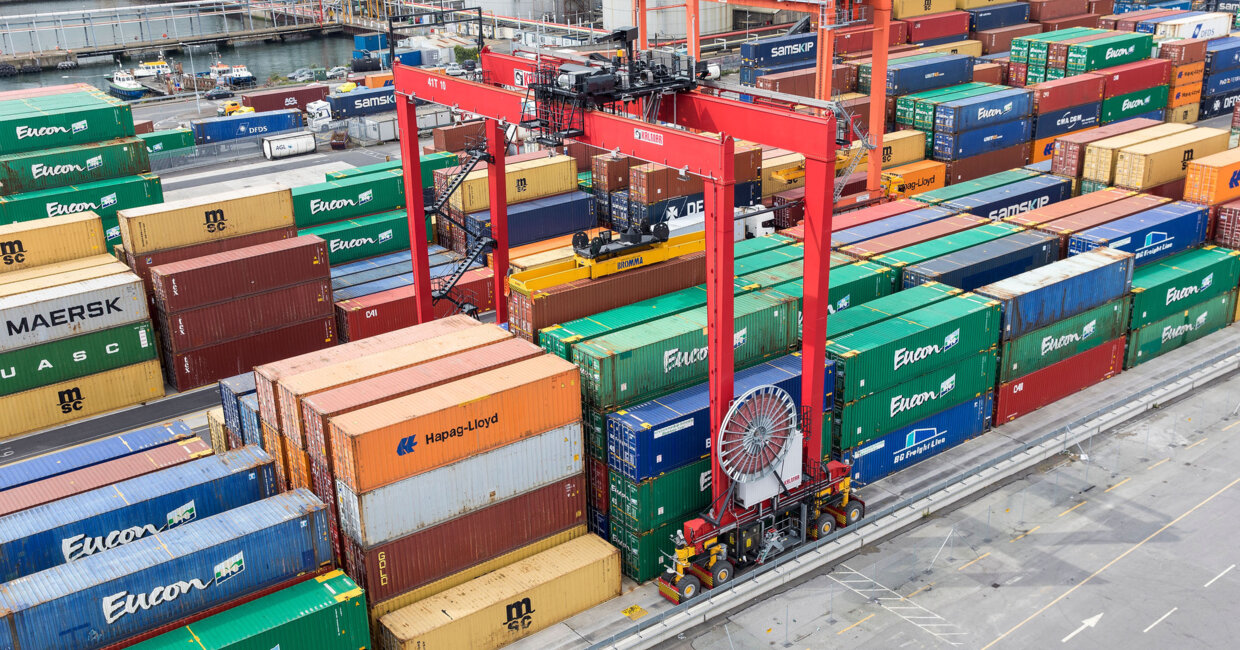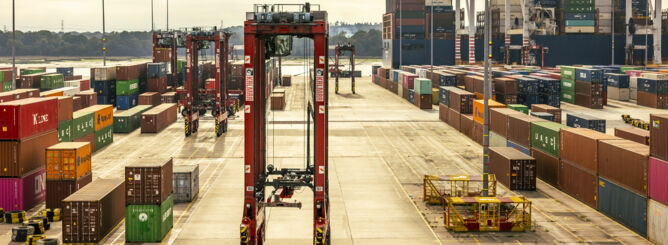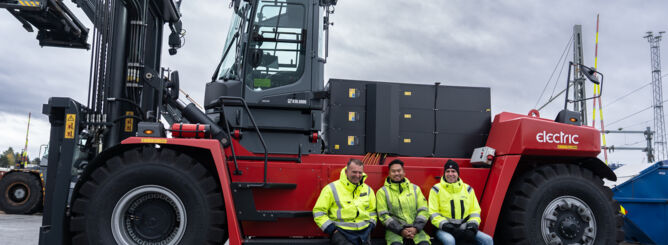Kalmar Zero Emission RTG with battery pack: better flexibility and no emissions
Recent advances in lithium-ion (Li-ion) battery technology have enabled the full electrification of cargo-handling equipment of all kinds. Now it’s the turn of the rubber-tyred gantry crane (RTG), a terminal workhorse that is used in hundreds of container terminals around the world. Equipped with a battery pack, Kalmar Zero Emission RTGs running on cable or busbar systems can now complete stack changes and power auxiliary functions without any diesel or emissions.
A ubiquitous sight at container terminals all around the world, the roots of the Kalmar RTG can be traced as far back as 1967 – two years before man first set foot on the moon – with the unveiling of Valmet’s brand new Mobile Gantry Crane. Fast forward over half a century and it’s an understatement to say that things have moved on somewhat.
Eco-efficient technologies for more sustainable cargo handling
Driven by the urgent need to combat climate change, governments and local and regional authorities around the globe are rolling out regulations and initiatives to support the adoption of eco-efficient technologies. Kalmar’s expertise in electrifying larger yard cranes stems back to the 1970s, and over the years we have invested heavily in developing electric, diesel-electric and hybrid solutions for heavy cargo-handling equipment.
“We have worked for decades to improve the eco-efficiency of cargo handling. Kalmar introduced the world’s first main’s powered RTG in 2002, and since then, we have brought to market various energy saving diesel-electric, hybrid and electrically powered machines to help customers reduce the environmental impact of their operations,” says Marko Rasinen, Product Manager, RTG at Kalmar.
Eco-efficiency is an important focus area for Kalmar’s R&D efforts in general. Last year, Kalmar announced its target to offer its full portfolio as electrically powered options, and today, over 50 percent of Kalmar’s cargo handling equipment is already available with electric power sources.
No diesel, no emissions, full mobility
“Traditionally, eRTGs have been equipped with a small diesel generator to power the crane’s auxiliary functions when not connected to the grid via a cable reel or busbar system – for example when moving between stacks or to a service area for maintenance,” Rasinen explains.
With the introduction of Li-ion battery technology the diesel generator can now be completely eliminated, meaning that the eRTG will maintain the mobility of a traditionally powered RTG. This makes the crane a fully zero-emission solution. With a fully charged battery, the new Kalmar Zero Emission RTG with a battery pack can travel up to 1,5 kilometres between stacks.
With a fully charged battery, the new Kalmar Zero Emission RTG with a battery pack can travel up to 1,5 kilometres between stacks.
“As well as enabling a significant reduction in a terminal’s fuel costs, there are time and cost gains from a maintenance perspective too,” Rasinen highlights. “Battery packs are practically maintenance free, i.e. they require considerably less maintenance compared to traditional generator sets. For example, they eliminate the need for things like regular oil and filter changes. There’s also no need for refueling, which means improved availability.”
Finally, as well as eliminating atmospheric emissions at source, the lack of a diesel-powered generator means that eRTGs powered by Li-ion packs are also quieter. This is an important consideration in light of the increasingly strict noise-emission regulations that many terminals are now subject to, given that they are more often than not located in or close to urban population centres.
Towards a more sustainable future for cargo handling
“With a battery equipped eRTG, customers can optimise their terminal throughput by concentrating several eRTGs in one stack during peak periods, as an example. Many terminals will benefit from this kind of eco-efficient flexibility,” Rasinen points out.
RTG technology has come a long way since it was first introduced in the 1960s. With the introduction of a truly zero-emission solution, Kalmar continues to pave the way towards a more sustainable future for the cargo-handling industry.



